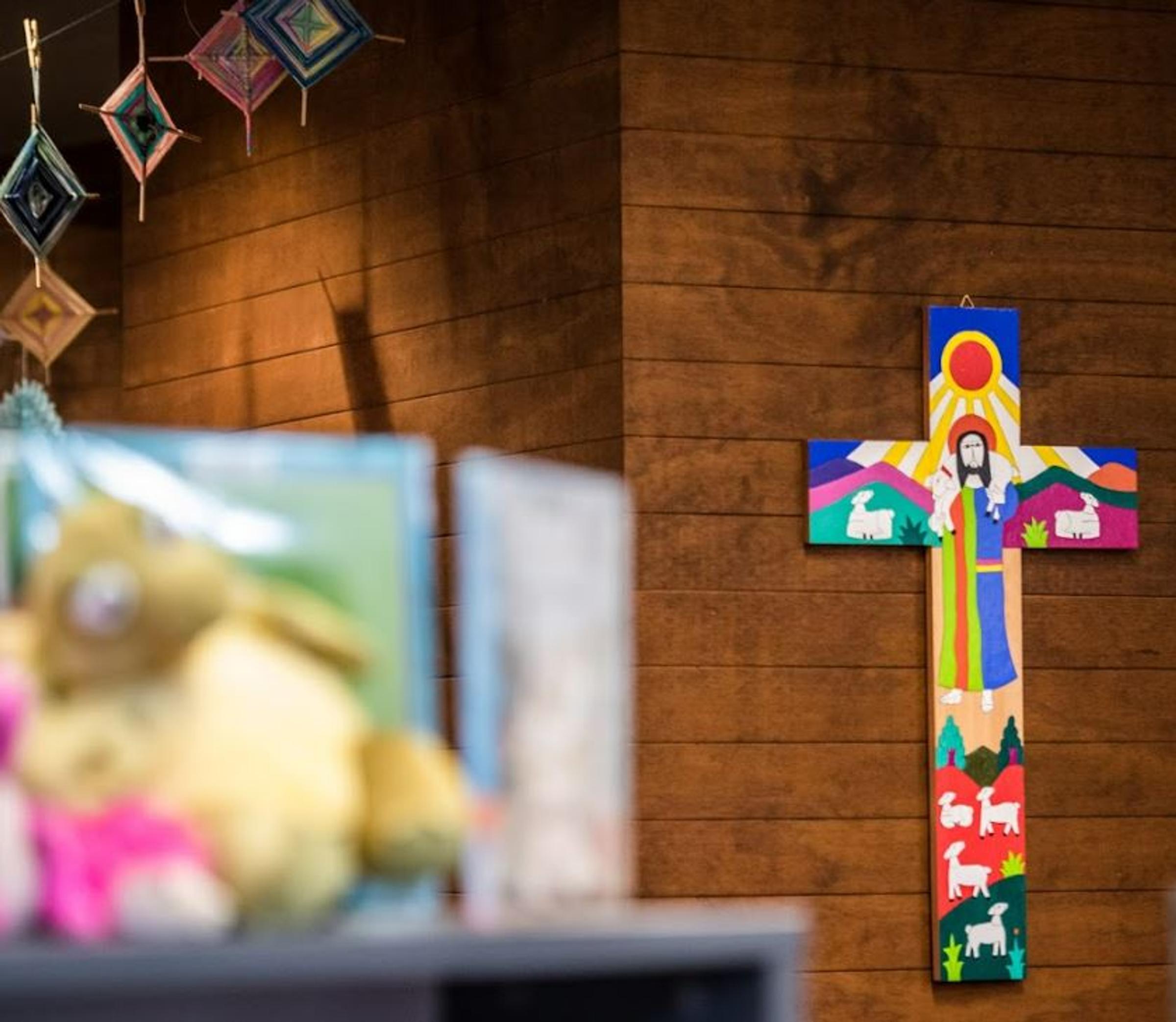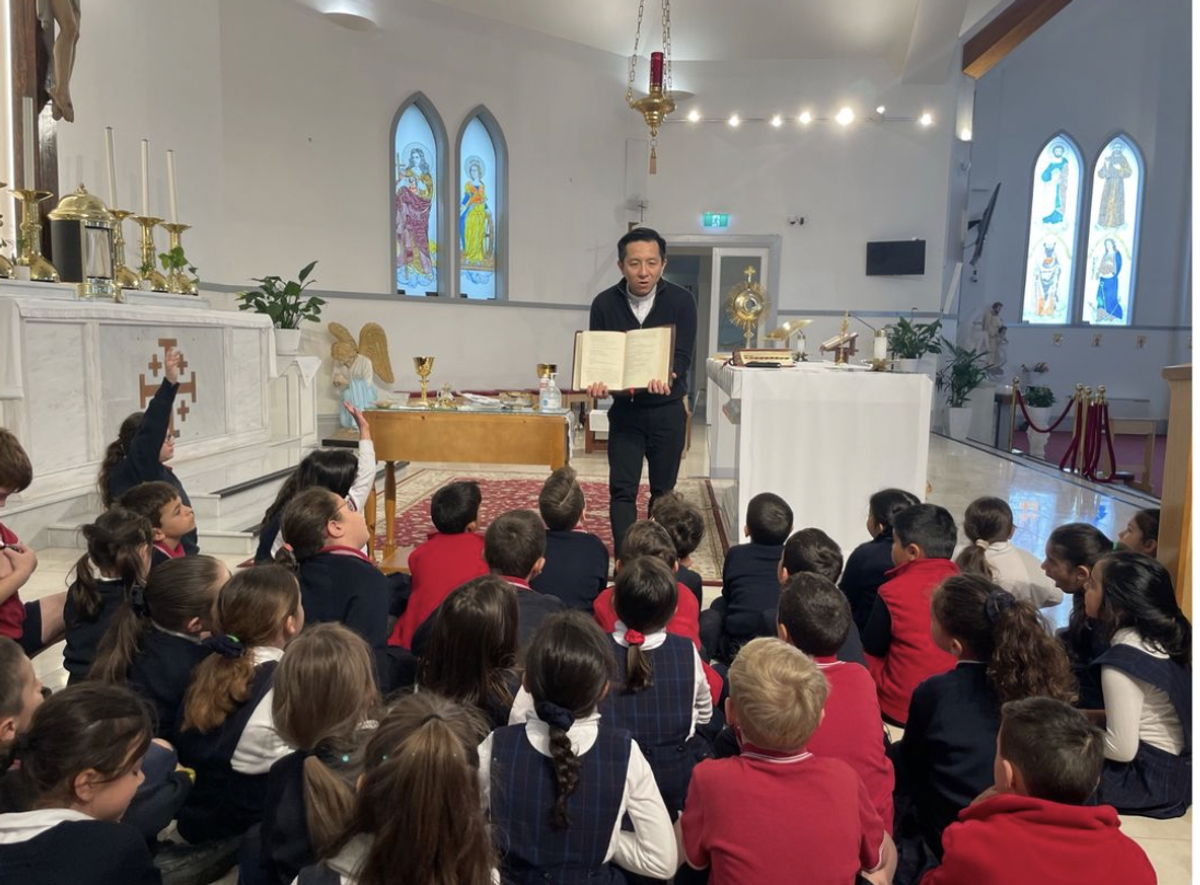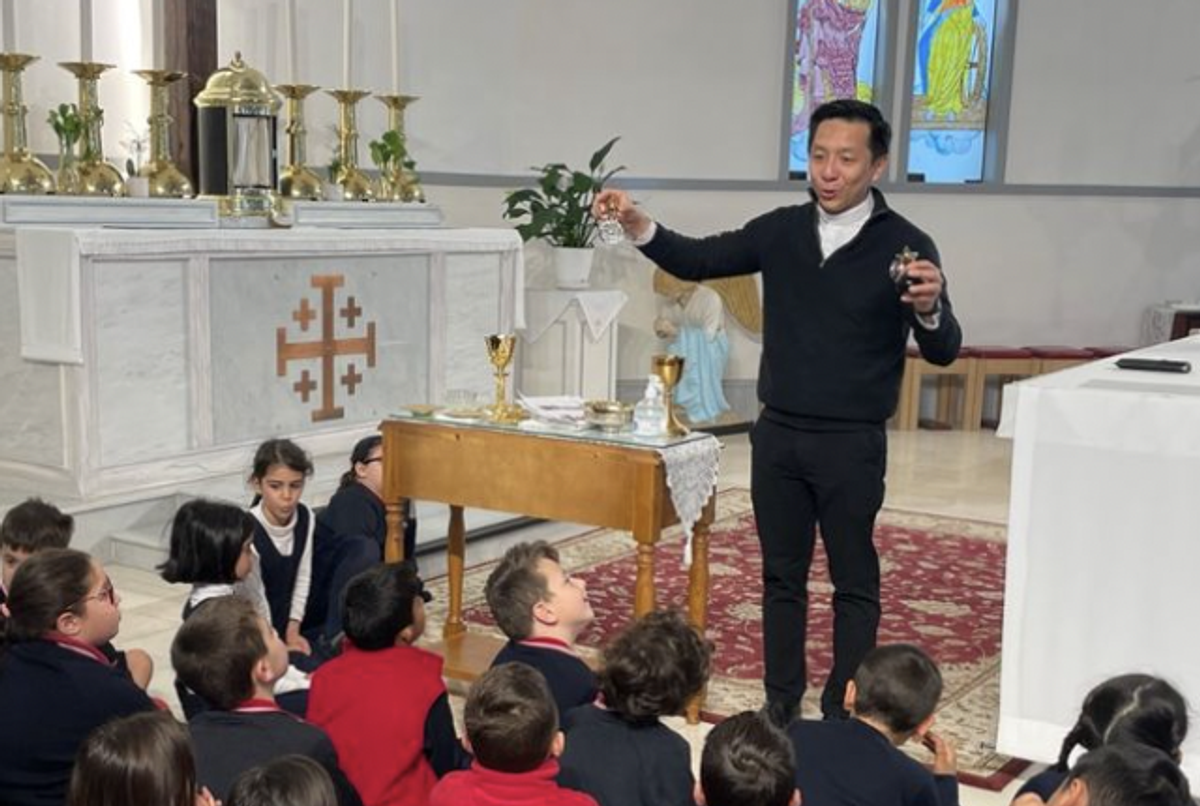Year 1 Report
Miss Accaputo & Mrs John

Year 1 Report
Miss Accaputo & Mrs John
This term, our Faith and Life Inquiry revolved around the big question, 'Past, Present, Future– How is it connected and why is it connected?' As researchers, we engaged in a Toys overtime incursion and viewed videos to find out about the toys that our parents and grandparents played with. We learned about the origins of some well-known toys of today. Some of our discoveries were:
Today toys are made of plastic, but in the past there were made of metal and wood and china.(Mila A)
Toy dolls in the past had real (human) hair. (Issak J.)
The Nintendo switch is used in the present because in the past there was no electricity (Johanna S).
When toys were made in the past, if you made a mistake, you had to start all over again (because they were handmade), but now they are made in factories. (Max S).
Using photos of our present lives as evidence, we considered what daily life looks like today and the roles played by the different members in our families. We are in the process of interviewing our parents and grandparents to find out about what daily life was like when they were children.
As members of a Catholic community, we inquired into 'Who belongs in God’s family?' and 'What does God’s family do when we come together to worship at church?' We compared and contrasted our family meal table to the altar – the Table of the Lord. This week we had the opportunity to have a chat with Father An about the Holy vessels and other objects that are used on the Altar.




As writers, we have been learning about the features of procedure texts. We focussed on action words (verbs.) We engaged in a variety of language experiences for e.g. How to makefairy bread, How to skip using a skipping rope and How to play Naughts and Crosses to help us write procedure texts about these topics.
As mathematicians, we have been using RUCSAC (Read, Understand, Choose, Solve, Answer, Check) to solve addition word problems. We are learning to use the strategies of counting on, doubles, partitioning, drawing a picture, using tally marks and using number lines. We will continue to explore strategies that we can use to solve subtraction problems.